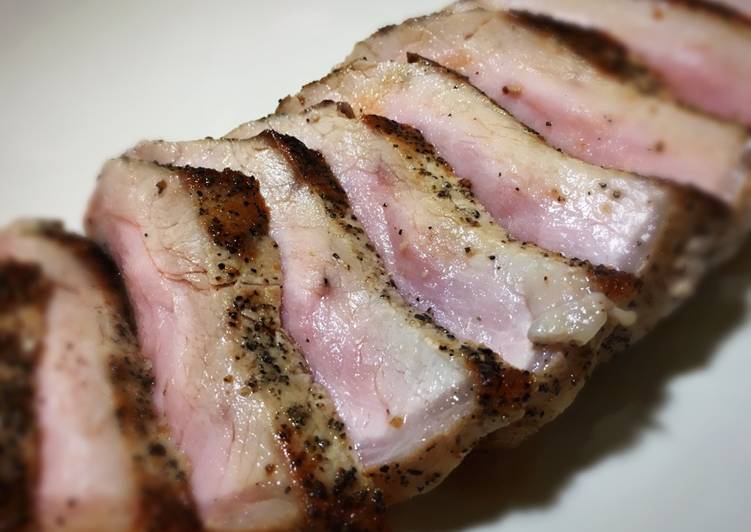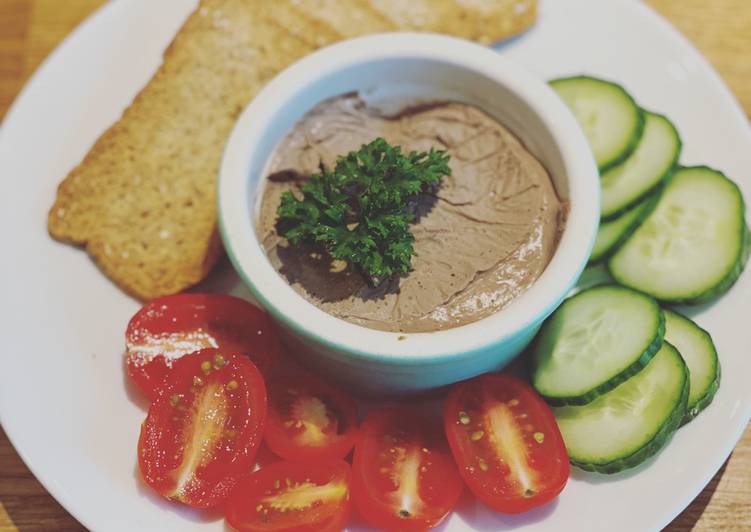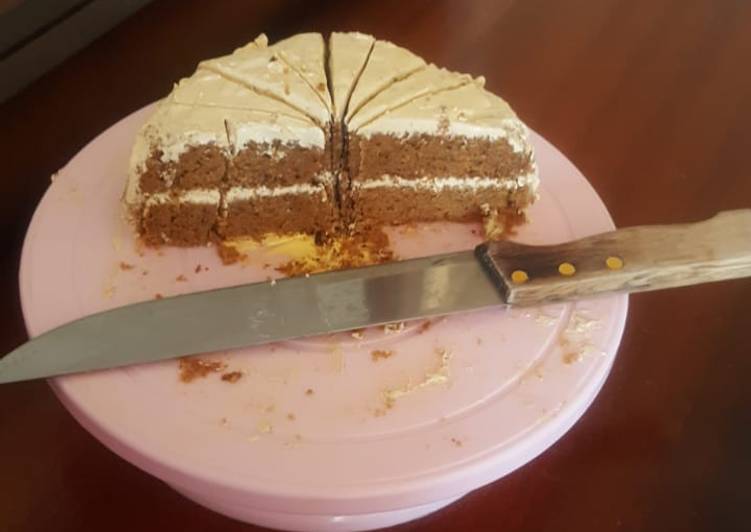
Hello everybody, I hope you’re having an incredible day today. Today, I’m gonna show you how to prepare a special dish, how to handle a pork chop. It is one of my favorites food recipes. This time, I will make it a bit tasty. This is gonna smell and look delicious.
How to Handle a Pork Chop is one of the most well liked of recent trending meals in the world. It’s appreciated by millions daily. It is easy, it is fast, it tastes delicious. They’re fine and they look wonderful. How to Handle a Pork Chop is something that I’ve loved my entire life.
Spice up your pork chops with all of the flavors you can handle. Like with straight up peppercorns, pork with a spicy kick to it only serves to make the meat even yummier. If you're feeling creative, you can create your own marinade using anything from your spice rack you wish.
To begin with this recipe, we have to first prepare a few components. You can have how to handle a pork chop using 5 ingredients and 14 steps. Here is how you can achieve it.
The ingredients needed to make How to Handle a Pork Chop:
- Prepare 2 nice pork chops
- Prepare Salt
- Take Pepper
- Get Oil
- Take Cast iron pan
Place enough flour to coat pork chops in a pie pan or flat dish. If you have time, brining the pork for even a brief period adds flavor and ensures juiciness in the finished chop. Iconic Wednesday & Friday Lunch Famous Pork Chop Lunch. Pork chops are one of the easiest proteins to prepare for a simple weeknight meal.
Instructions to make How to Handle a Pork Chop:
- First off, get some good pork chops. Thick, beautiful pork chops. I like them off the bone, but either way they should be thick. Part of the fun here is seeking out the best meat that's available to you. I went to a great local butcher for mine. A bit expensive, but worth it in many ways.
- Season up those chops. A nice coat of salt and pepper. Don't skip the sides, especially that strip of fat. Crispy, salty fat, so delicious.
- Now, let your meat sit at room temperature for 15 minutes or so. This is often referred to as 'resting'.
- The trick here is to get as even a temperature as possible throughout your chops. You can only apply heat to the outside, so you can't cook the center without cooking through the surrounding meat. By letting your meat come up gently to a slightly higher overall temperature, you're making it so that you won't have to apply as much energy to reach your target temperature. In practice, this means it's less likely you will overshoot that target.
- Now get a heavy cast iron pan on medium heat. Leave it awhile to heat up, a few minutes at least.
- Pour in some oil. Grapeseed oil, vegetable oil, olive oil, whatever you have. Hang a chop into the hot oil. If it sizzles nice and steady, it's hot enough. Place both pork chops in the pan. Tap 'em down a bit to make sure they connect. A little word of warning here, this activity tends to splash hot oil, so watch yourself.
- Now you have 2 options. You can set a timer for 4 minutes, or you can go with your gut. Either way, if you flip them just right, they'll have a beautiful, golden brown, crusty finish. Otherwise, better luck next time.
- The other side gets the same treatment.
- Don't forget the remaining sides. This is a common mistake. You miss out on a lot of flavor if you don't crisp up that fat and get caramelization anywhere you can find it. Sometimes you'll get a misshapen chop, and it'll be difficult to balance it on a side. try leaning it against the edge of the pan, or balance multiple chops against each other. Do what you can.
- When they're crusty golden all around, transfer your chops to a cutting board and don't touch them for about 10 minutes. Resting again. This lets the cooking sorta coast to a stop.
- Maybe put a little butter or olive oil on those bad boys (maybe even an herb butter or an infused oil for added flavor). That extra flavor will soak in as your chops cool.
- Meanwhile, you should have a hot pan sitting there with some little chunks of meat stuck to the bottom. That's flavor. Don't waste it. While the pan is still hot, pour in a little alcohol, anything you're willing to spare, and scrape those chunks up into the resulting liquid. Now season that liquid a bit and either serve it over your chops, or set it aside for another use.
- Ahhh, finally, the moment has come. Look closely at your fine hunk of seared meat. You will see, as in a piece of wood, that the meat has a grain, and that the grain is aligned in a specific direction. With a sharp knife, slice perpendicular to the alignment of this grain. The grain denotes the direction of muscle alignment. Slicing through those muscles instead of with them, will make for tender slices.
- Now fan out those nice slices on a plate. Serve it with anything. A big chunk of meat like this should really be the star of the show. Maybe dress it up with a little olive oil or arugula, or coat it with a sauce or relish of some type. Pork loves apples, rosemary, potatoes, or maybe some big, brutal flavors like whisky or molasses.
The chop is cut from the spine of the pig and contains part of the rib meat and often the bone. While pork chops are a lean cut of meat, bone-in pork chops can be very flavorful and tender—when prepared properly. The following pork chops recipe provides the foundation for cooking the most perfectly tender and. Remove the pan from the heat and toss in a knob of unsalted butter, plus some hearty herbs and spices (rosemary, thyme, bay leaves, and dried chiles are all good bets). Brown sugar-pineapple pork chops with caramelized red onions and tangy goat cheese are a delicious one-skillet supper.
So that’s going to wrap it up with this special food how to handle a pork chop recipe. Thanks so much for reading. I’m sure that you can make this at home. There is gonna be more interesting food at home recipes coming up. Remember to save this page in your browser, and share it to your family, friends and colleague. Thanks again for reading. Go on get cooking!


